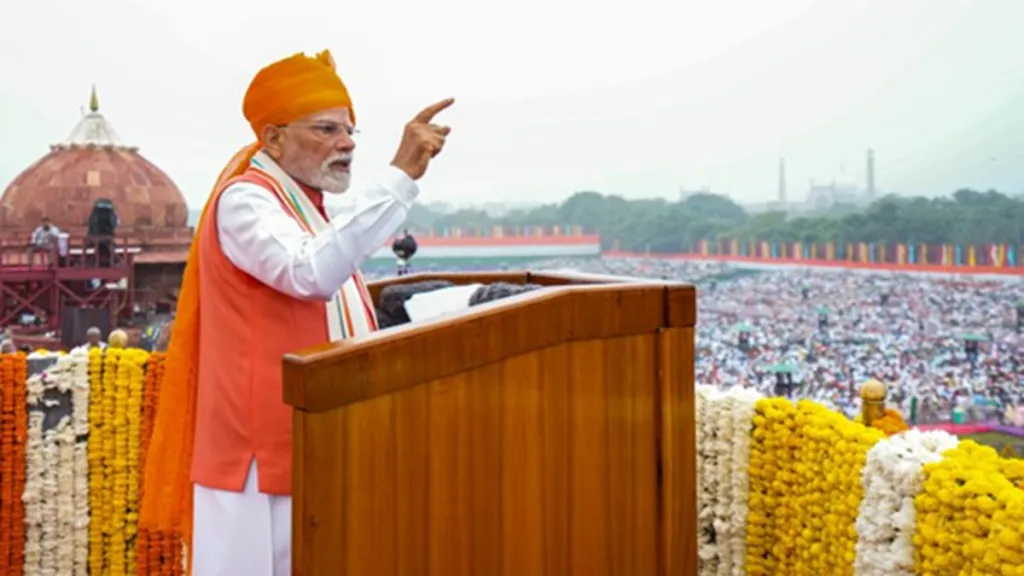In an unstable global environment, countries are increasingly focusing on their own interests, with “resource nationalism” being at the core of national strategies. Prime Minister Narendra Modi’s emphasis on imbibing the spirit of a Swadeshi model of development in his longest Independence Day speech, on Friday, fits in perfectly with this context, though the immediate background was that of Donald Trump’s tariff fury on India. Atmanirbharta (self-reliance) is the very cornerstone of Viksit Bharat (developed India), Modi asserted, while flagging the various schemes to make the country self-reliant. Unperturbed by the high tariffs being imposed on India, he said his government won’t accept any agreement that would adversely affect India’s farmers, cattle rearers, and fishermen. Even in a milieu of “de-globalisation”, Trump’s extravagant tariffs are more a contingency than an abiding feature. However, it serves as a timely reminder of the need to brace ourselves for external shocks of high magnitude. India is a capital-scarce country, and it needs to strategise well to boost money supply and ensure efficient deployment of capital for productive capacity creation. Its natural resources are robust, but not all-encompassing or efficiently exploited.
Harnessing Human Capital and Inclusive Growth
What must inspire India’s confidence in the uncertain world is its abundant human capital, and the immense potential of its vast domestic market. However, optimum use of human resources for all-round prosperity requires more sections of people are equipped with useful skill sets. The path to self-reliance must necessarily be a broader one with greater inclusivity and tolerance. Higher growth is unviable without an inclusive approach. The tough goal of Viksit Bharat for 2047 may or may not be met, given the parameters of being a “developed” country, and where we stand now. Even if it takes another decade or so to reach there, one must not fret over it, so long as the country is on a steady growth path.
A cursory look at India’s inherent strengths and its transactional relationships with the external world would reveal both problems and potential opportunities. The country has achieved a high level of food security, but 88% of the crude oil processed in the country is imported. Import dependency for semiconductor and rare earth elements (REE) is as high as 90%. Half of REE supplies come from China. The recent tightening of export controls on REEs would not have threatened to retard the pace of India’s green energy projects and electric mobility plans, had its considerable rare earth reserves been ready for commercial exploitation. Only lately has the government shed its reluctance to allow private participation in monazite (uranium and thorium) and non-monazite REE.
Balancing Self-Reliance with Global Integration
India is credited with a relatively high degree of macro-economic and financial stability. Only a fifth of the country’s economic output is driven by external demand. The right strategy for the country at this juncture would be to reinforce its core strengths with necessary reforms of factors of production, while seeking also to complement it with external links. The prime minister’s promise that the restructuring of the goods and services tax would result in substantial tax cuts and make “everyday items cheaper” signals not just a consumption booster, but also an added impetus to economic output. Liberal and mutually beneficial trade alliances are being forged with developed countries. India also should aim at having a much larger presence in the expansive Indo-Pacific markets, by being part of the Comprehensive and Progressive Agreement for Trans-Pacific Partnership that includes 12 countries and vouches for a rule-based trading system.

